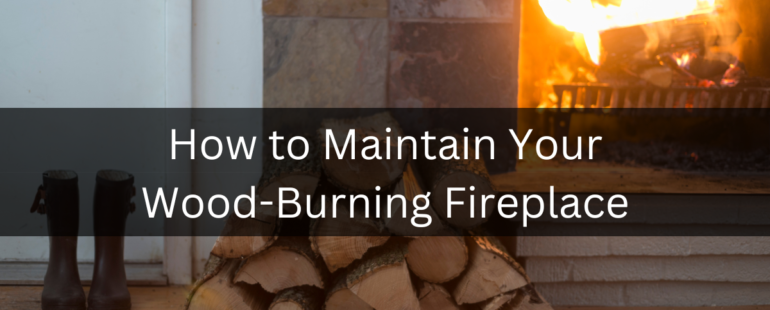
You just moved to Washington state, and you’re looking to combat the cool, rainy weather. Your new home has a wood-burning fireplace, but you’ve never used one before and aren’t sure how to operate it safely. How can you keep the home fires burning? Consider a few tips.
From the ground up
First, the basics: Most wood-burning fireplaces are built of heavy masonry materials, set atop strong foundations and fitted with brick chimneys. Others are factory-built, featuring stainless steel chimneys. Most chimneys are capped with screens that not only keep animals out, but contain sparks and embers from below. Other safety features include mesh screens or glass doors to contain embers, as well as a cast-iron damper above the fire to be opened when the fireplace is in use and closed when it’s not.
Fireplace care
Next, let’s talk about fireplace care. After each fire – once it’s completely out – remove the cold ashes. If you’re worried about a mess, buy an ash vacuum. Ash can be sprinkled on flower beds, as it provides nutrients for plants.
Chim-chim-cha-roo, sweeping your chimney is critical. So is scheduling an annual inspection with a certified chimney sweep, as chimneys get coated with soot when used. If left unchecked, this coating can build up and catch fire. This is dangerous because, unlike the fireplace, the chimney is designed only to withstand the heat of smoke and gas, not an actual fire. Schedule this annual cleaning at the end of each spring. Otherwise, summer humidity can combine with creosote in the chimney to form damaging acids and noxious odors.
Fireplace safety
On to safety: It’s understandable that you’re eager to use the fireplace in your new home, but don’t light it until you’ve had it inspected – and cleaned – by a certified pro. This is especially important if you bought an older home.
If the previous owner didn’t do so, install smoke and carbon monoxide detectors. Make sure they work and replace their batteries regularly.
Keep carpets, drapes, furniture and rugs away from your fireplace when it’s burning.
Fireplace maintenance
Now we’re ready to discuss maintenance. While an inch of ash at the bottom of a fireplace makes it easier to light a fire, you should always clean ash once it reaches the bottom of the grate. Remember to wear a mask for safety!
And again, get the wood-burning fireplace and chimney in your new home cleaned and inspected by a certified sweep annually, preferably at the end of burning season. More frequent inspections may be needed if you notice that soot and creosote build up over 1/8 inch in the sides of your chimney. Find a sweep via the Chimney Safety Institute of America.
Burning tips
With all the big-picture tasks accomplished, we are ready to discuss day-in, day-out use. Burn only seasoned wood that has been cut and dried, out of the elements, for at least six months. Split wood dries – and burns – better than whole logs. How can you tell whether wood is seasoned? Knock logs against one another and listen for a sharp ringing sound. Unseasoned “green” wood will make a dull thud. Avoid using green wood, as it doesn’t burn cleanly, creating soot and creosote buildup.
Seek out hardwoods such as maple, ash, and oak logs – they’re denser and heavier than softer woods like poplar, pine and cedar.
Starting a fire
At last, we’re ready to light a fire. Test out your fireplace by lighting some small pieces of seasoned wood from the top down. If smoke doesn’t exit the fireplace vertically – and instead enters the room – it’s time to troubleshoot. Soot buildup, chimney debris, a closed damper or wet wood could be the culprit.
Fireplace fires start from the bottom up, like a campfire – from the tinder to the kindling to the big logs. Be sure to use enough tinder – such as sticks, newspaper or even dryer lint – to get your fire going, and to help the large logs catch fire.
Always call a pro
Consulting a chimney professional is a great choice when you’re moving into a new home with a fireplace. So is hiring a professional moving company like A2B Moving & Storage. Give us a call at 206-419-5748 to discuss your upcoming move!
Considering a move to New Mexico? Check out the five fastest-growing cities in New Mexico from our partners at Las Cruces Moving & Storage.
